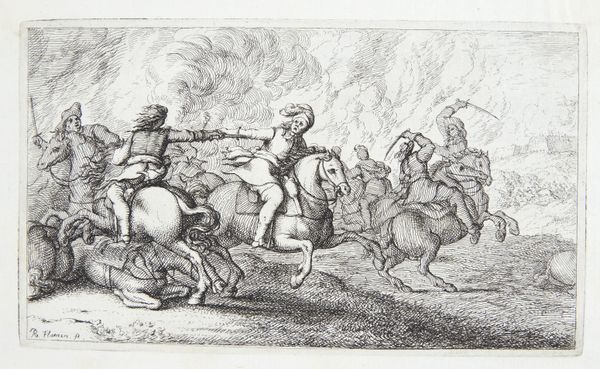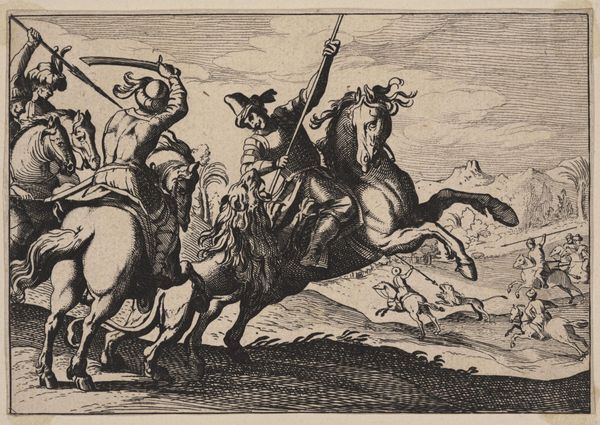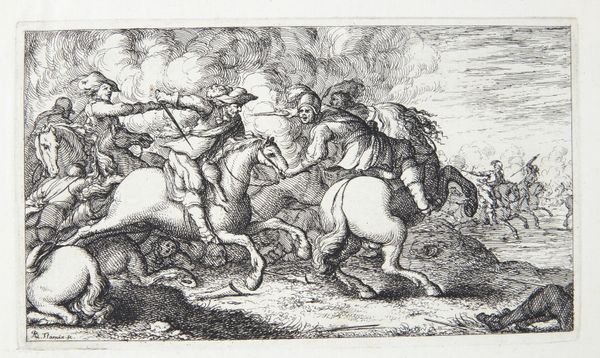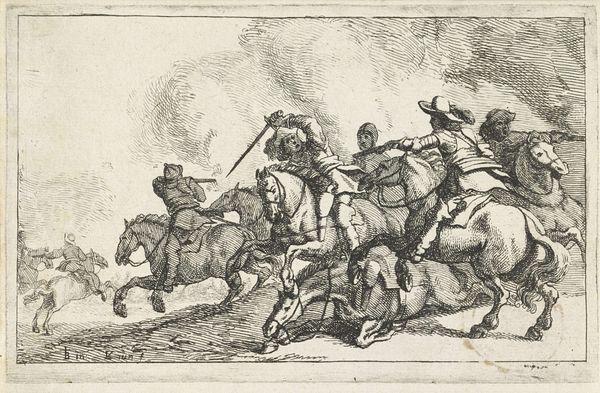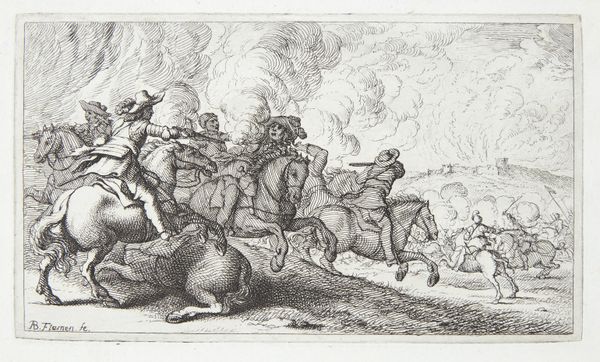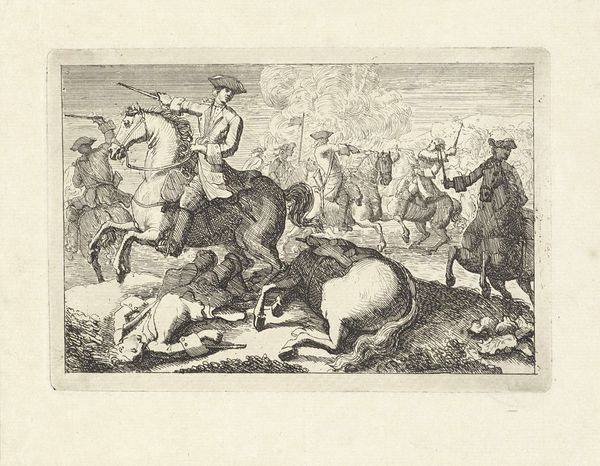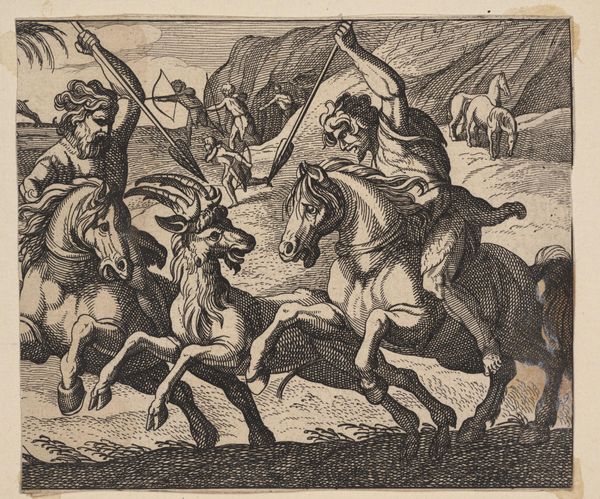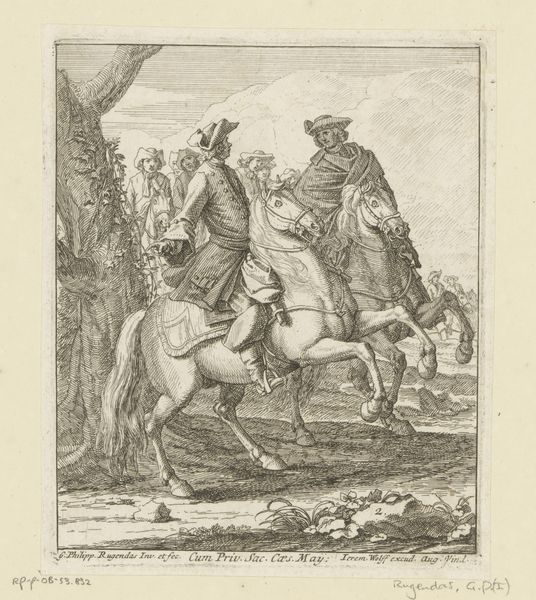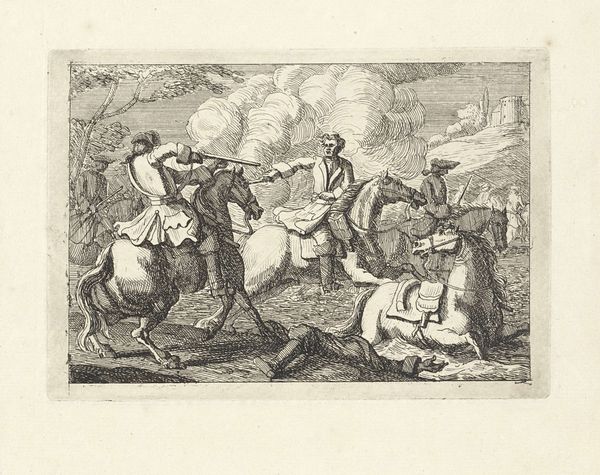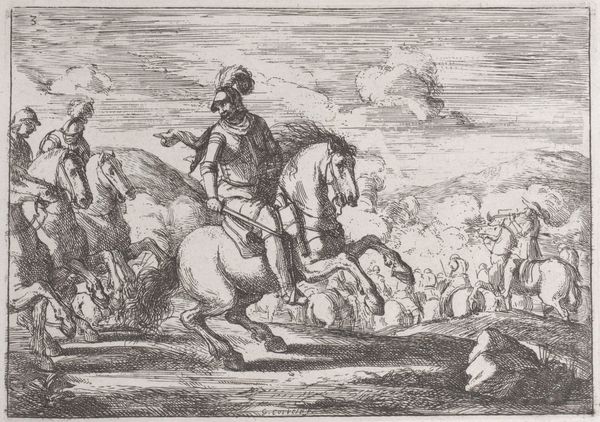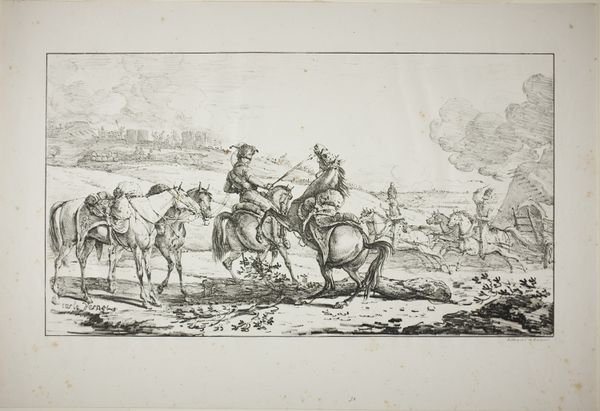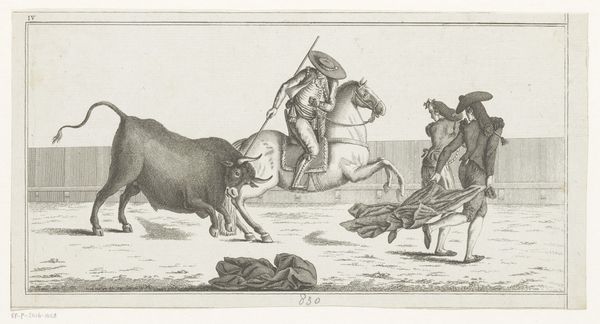
print, etching
#
baroque
# print
#
etching
#
figuration
#
line
#
genre-painting
#
history-painting
Dimensions: 97 mm (height) x 175 mm (width) (plademaal)
Curator: Instantly, I get a sense of wildness, an uncontrolled surge forward, a frenetic energy that’s barely contained within the frame. Editor: And it really speaks to that chaotic period, doesn’t it? We’re looking at "Cavalry Chasing an Enemy" by Albert Flamen, an etching probably created sometime between 1620 and 1669. It depicts exactly what the title suggests, though I wonder which enemy we’re meant to be thinking of. Curator: The energy's almost cartoonish, isn't it? Exaggerated, like the horses are barely touching the ground. It feels less about historical accuracy and more about… theatrical performance. Editor: The drama is certainly amplified. Considering the period—marked by the Thirty Years' War and other conflicts—this image taps into the broader European obsession with militarism and the glorification of war. Though the details might be murky, these soldiers represent the machismo, power, and ultimately, the violence inherent in that culture. Curator: But is it really glorifying? The composition is almost overwhelming; those plumes of smoke feel suffocating. To me, it’s almost critical, a look at the disarray that combat brings, not really the ‘glory.’ Editor: Perhaps. Flamen’s choice of etching, the precise line work… it creates both distance and intimacy. We’re observing the action, but the close detail implicates us. It's difficult to turn away. Who benefits when war is sanitized? Flamen’s baroque aesthetic choices allow him to deliver that difficult message through dramatic visual components, such as heightened emotions or obscured events, rather than clear instructive rhetoric. Curator: That is definitely true: that smoky atmosphere, a palpable uncertainty hangs over everything. War and political agenda are both murky matters. Even without the glory, it's fascinating, right? All this detail from just lines etched onto a plate. Editor: It’s a potent reminder that even in ostensibly historical art, ideology and artistic vision converge and are very hard to tease apart. History never feels as unbiased as what you think a plain etching suggests. Curator: And maybe that ambiguity is the point: war, glory, power...it's all a tangled mess, expressed with incredible energy. Editor: Exactly, and recognizing the tangle is maybe the most important thing of all.
Comments
No comments
Be the first to comment and join the conversation on the ultimate creative platform.
